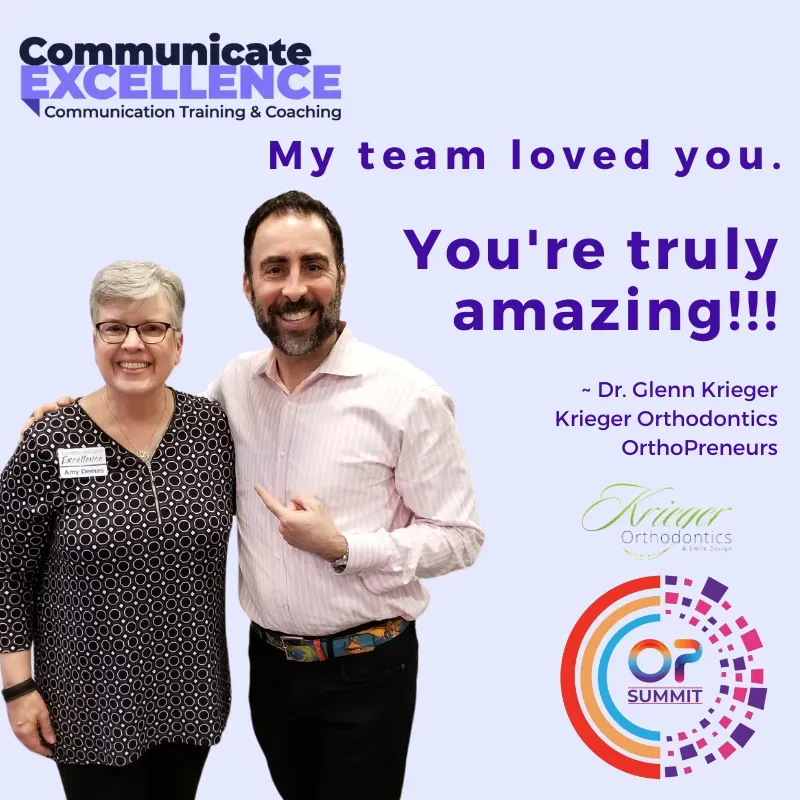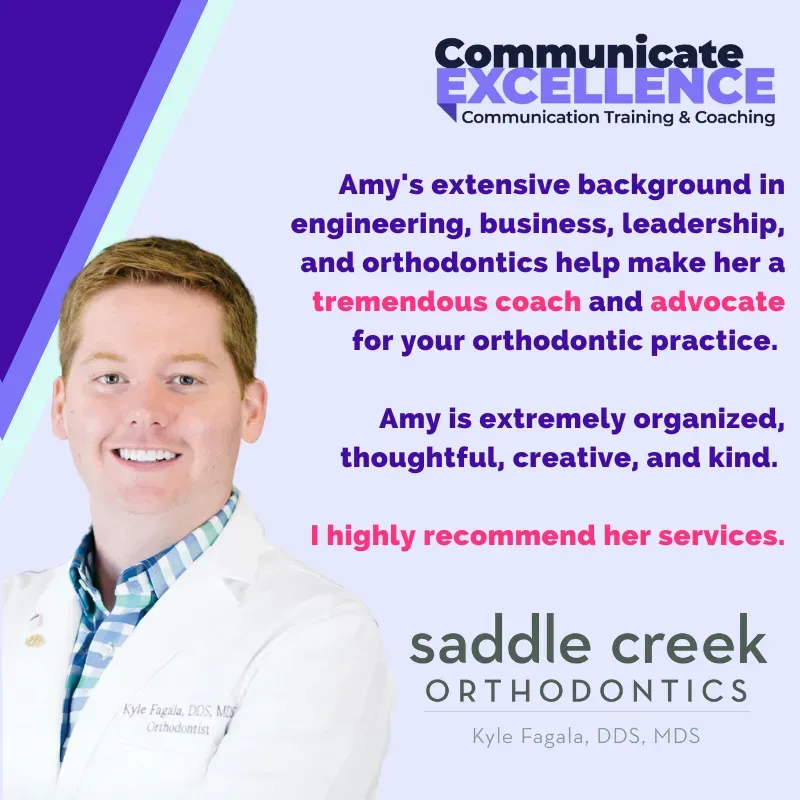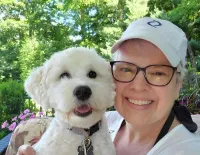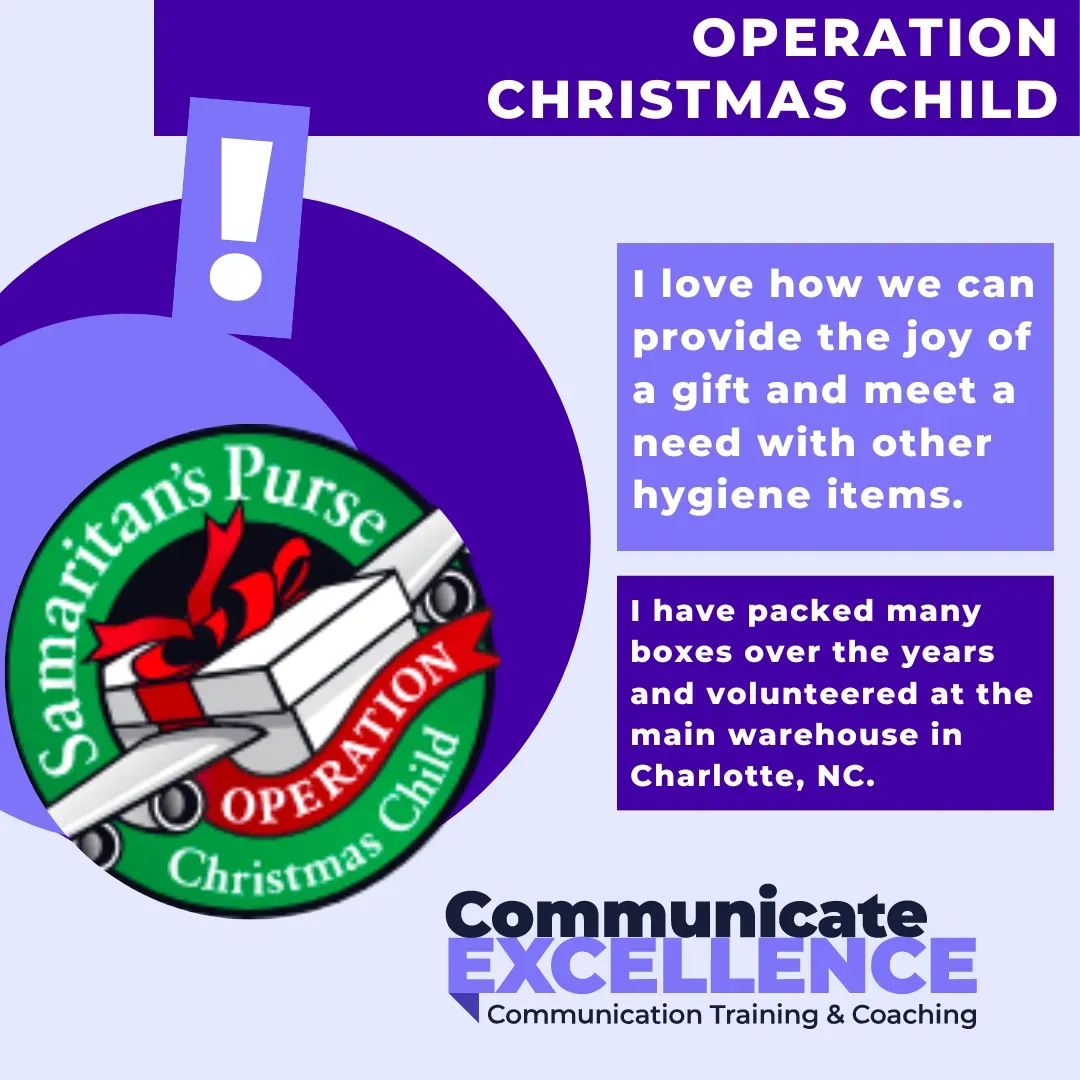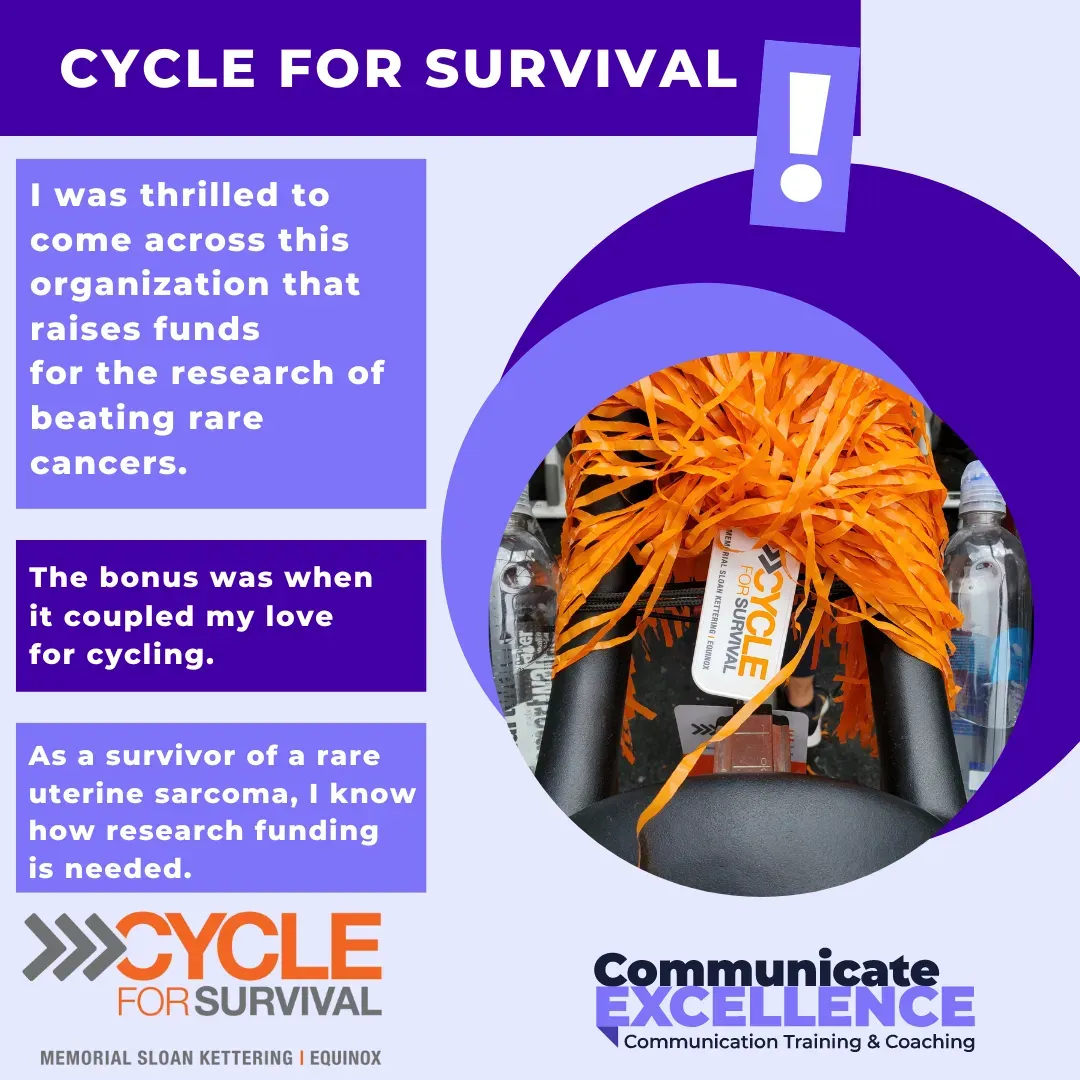My Key Concept Videos
I created this page to introduce you to my way of working, to my style and energy, and to my concepts.
I'm a boutique consultant, who maybe does things a little bit differently from what you're used to, so it's important to share how I work with you before we get started. I've brought together some key videos for you to watch before you jump on a call with me to talk about your training needs.

Hear from Amy
The ONLY Communication Training Consultant Specializing In Orthondontic Front-Desk Employees
Saving orthodontists, like you, thousands of dollars in marketing costs every year because your team knows how to win over each patient by looking after them well -
we're here for all your
customer service training and growth needs.
I am Amy & I have worked in EVERY admin role in the practice




Every practice needs an Amy!
Communication etiquette just isn't taught in schools, not even at home anymore - especially since the advent of caller id!
Our team members find themselves in "front of house" roles with little to no formal training. Let's make a change. Let's help our people feel confident and eloquent when handling telephone interactions.
My customer communication training will help you to 10X your patient experience to massively impact your Win ratio!
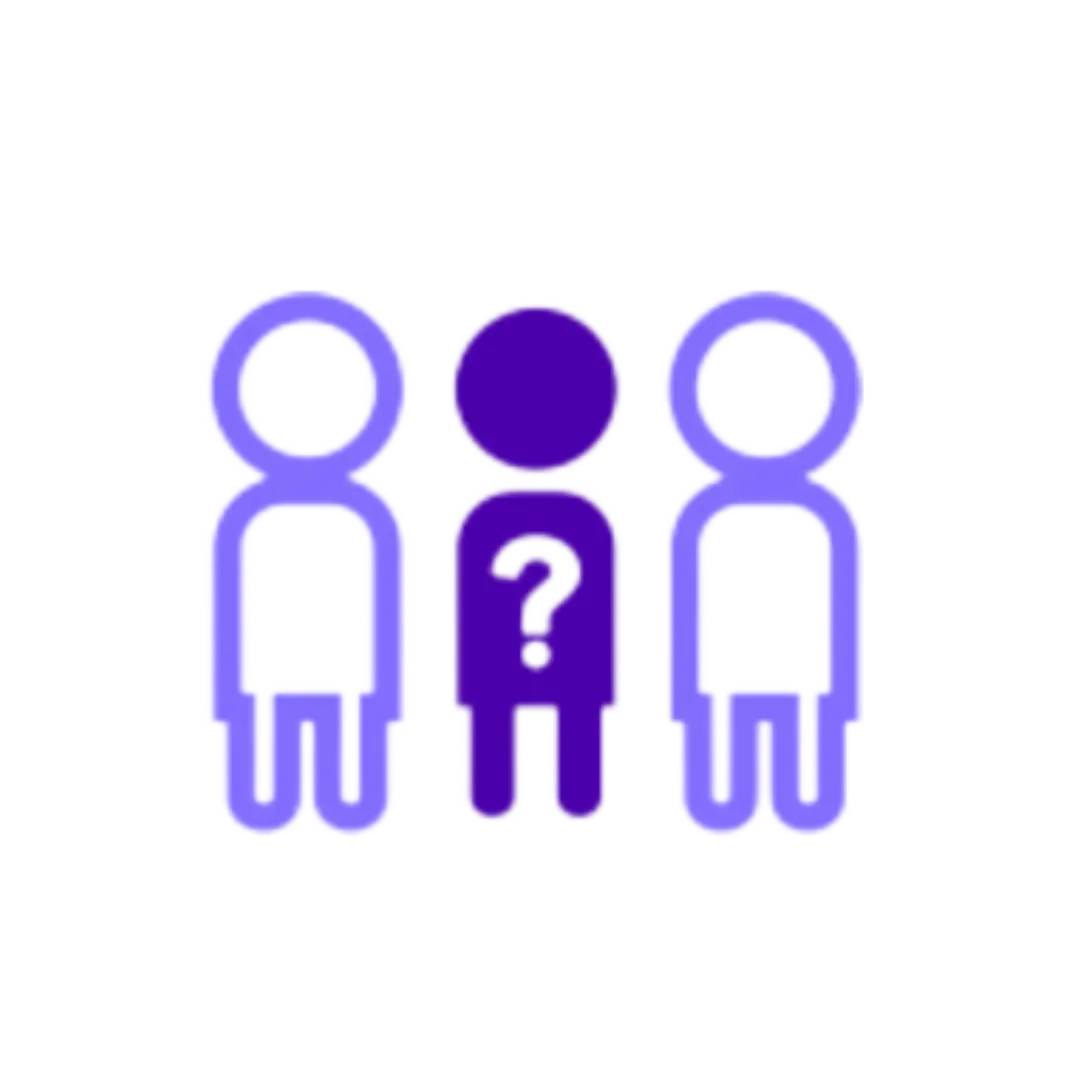
40%
Decrease in No Shows
because all your customer relationships are real connections, right from the start.
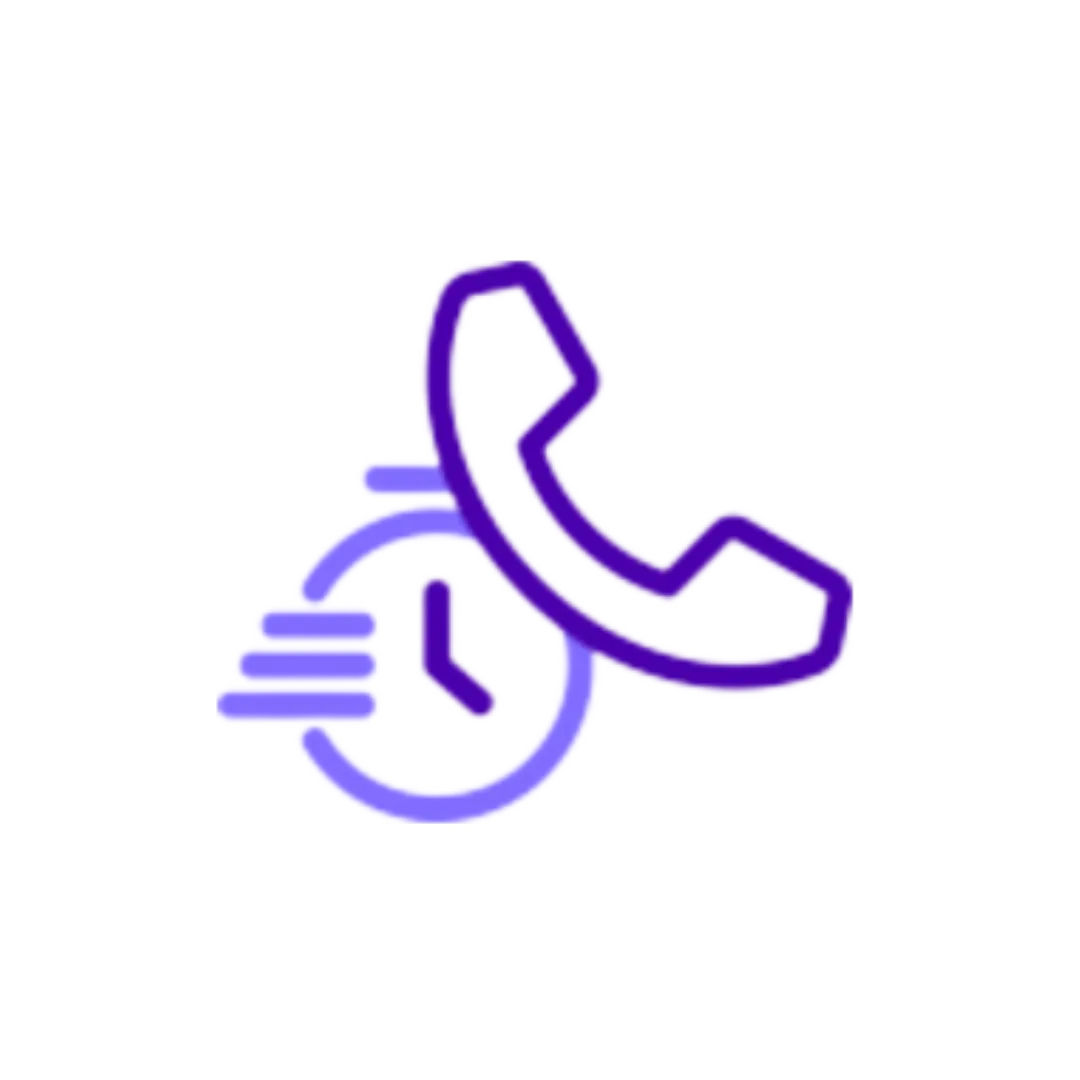
64%
Reduction in Longer, Problem Calls
because you're no longer inadvertently upsetting your valued customers.
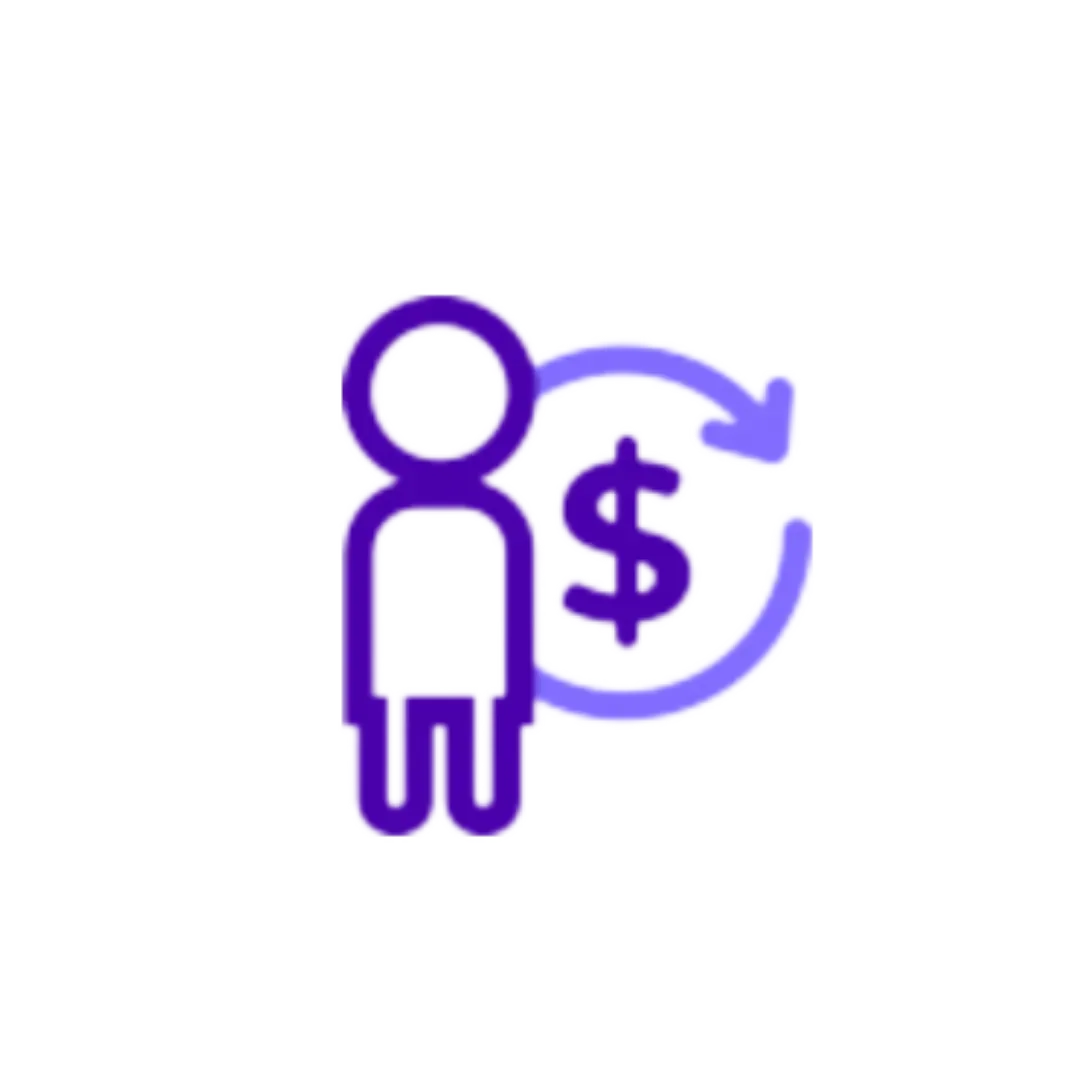
20%
Increase in Production
because you've built trust with your customers from the beginning, so your win ratio is much higher.
HOW TO WORK WITH ME

Phone Coaching
Telephone skills training for efficient and impactful first impressions with your receptionist and front office team.
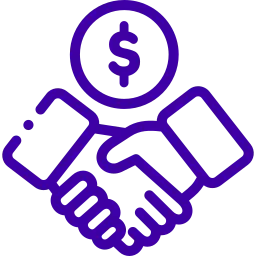
Sales Coaching
Treatment Coordinator communication training for consultations to adapt, read the room, and win the start.
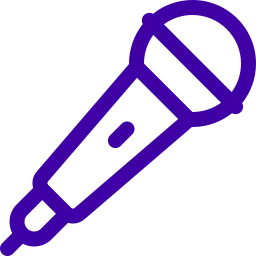
Workshops & Keynotes
Book me for your team or appreciation event you are running to provide customer experience training.
Join my mailing list for regular inspiration, tips and techniques to share with your team.
Watch my short video on the 5 Types of Questions as a welcome gift.
Did you know there are different types of questions? Annoyingly, we often default to the question type that doesn't actually help move us towards our goal.
Take a few moments to watch my short video and you'll learn a few of the different types so you can be more conscious of your speaking habits and bring the correct question type to the situation at hand.
Do share this video with the rest of your team to help them make the same change - it's my little thank you for having you join my mailing list.


5 Chapters to Change a Habit
To change a habit is rarely easy, even when we are motivated to do so. But then there are times force us to and require us to change a habit. When that is the case it is easy for us to resist the new normal, to take on a new habit or routine. We hold on to the old with a death grip.
I get it and understand. The older I get the more I want to get into a rhythm – a groove – and run with it. I have created a deep habit that has either become easy or I enjoy. Why would I want to change?
But as life has it, and as Heraclitus tells us, “The only constant in life is change.”
Today, let’s look at a great poem by Portia Nelson “Autobiography in Five Short Chapters” from her book, There’s a Hole in My Sidewalk, as our guide of the process to change a habit.
Chapter 1 – Unconsciously Incompetent
I walk down the street.
There is a deep hole in the sidewalk.
I fall in. I am lost. I am helpless.
It isn’t my fault.
It takes forever to find a way out.
I find myself many here times as I embark on a change of habit. I know the right answers but prefer my old ways and don’t even realize the gap between my knowledge and my habit.
This is where I find many team members when I begin coaching. During the training session, they know many, if not all, of the right answers and truly believe they are doing everything to match their knowledge.
But…what I observe from recorded calls, consults, and exams demonstrates that NOT to be the case.
Chapter 2 – STILL Unconsciously Incompetent
I walk down the same street.
There is a deep hole in the sidewalk.
I still don’t see it. I fall in again.
I can’t believe I am in the same place.
It isn’t my fault.
It still takes a long time to get out.
“No, you must be mistaken; that was the ONLY time I did/didn’t do it right.” A phrase we could all admit to thinking, even if we don’t say it out loud.
Here is where a feedback loop is so important. We must provide evidence of the current habit. This is why I insist on recordings of calls, exams, or consults. One mystery call, one mystery shopper, one data point does not validate a trend. And with our tendency to refute the evidence of one data point as an anomaly, it is imperative to break through the rationalization and justification to uncover the truth of what is really happening.
Chapter 3 – Consciously Incompetent
I walk down the same street.
There is a deep hole in the sidewalk.
I see it there, I still fall in.
It’s habit. It’s my fault. I know where I am.
I get out immediately.
Here is the beginning of change. It starts with AWARENESS. It is when we SEE and HEAR what is actually going on even though we are still not fulfilling the desired action. It is the MIND change.
What I notice with clients and those I coach is the “AHA” happens AFTER the fact. This is absolutely normal, but we should still CELEBRATE this as a win. It is the first step in the right direction. It IS a change! It is why we actively celebrate this with my clients.
We must not only look forward to the ultimate goal of what we desire. No…we must look to how far we have come and actively celebrate the forward progress and this chapter of change.
I warn my clients that they will start hearing my voice in their heads at this point. So many times the action is still not the desired action but a student will testify that they IMMEDIATELY NOTICE after they run through their old habit with the AWARENESS of what they wished they did. They realize it, hear my guidance, and determine that the next time they will get it right. They are in the process to change a habit in a successful way.
Chapter 4 – Consciously Competent
I walk down the same street.
There is a deep hole in the sidewalk.
I walk around it.
This next chapter to change a habit is exciting because we begin to see and hear the difference. This takes effort…and usually a LOT of effort. This is where you may see sticky notes and other reminders to help break the old cycle with a new habit.
To have success in this chapter of change is to exercise the intention to follow through with the new habit. And here is the thing… stress can short-circuit the intention to change. The key is we must continue and press forward.
Chapter 4 is a tenuous spot. It is a danger zone. Here is where good intentions and a spark of change can fade away. A big factor of this is because it is still taking a LOT of effort. This is why I build coaching programs that have built-in maintenance check-in’s. We want to ensure that even after a time of stress we press onward to the ultimate goal as we change a habit.
Chapter 5 – Unconsciously Competent
I walk down a different street.
Finally! Glory be! Here is the destination. You have arrived!
No longer is a lot of brain effort needed to complete the intended action or habit. The new habit is so embedded that the old way would now feel odd.
It is so wonderful to see clients arrive here. Confidence is high. Competence is high. Positive feedback is high. Patient responses are positive. It is a win-win for everyone.
Summary
In our world, change is the norm if we wish to maintain excellence. But change is neither automatic nor arrived upon in a straight line. To change a habit takes dedicated work, effort, follow-through, and accountability. Be sure to provide them all to execute the desired change.
Our Clients' Experiences

